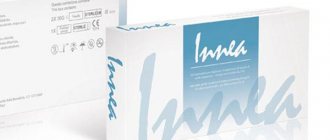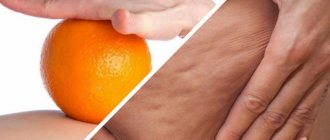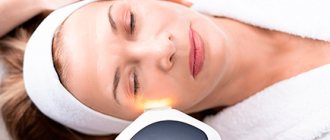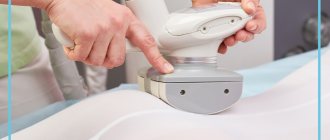Operations Aesthetic operations Otoplasty (ear correction)
- What is otoplasty (ear correction);
- Who needs plastic surgery for protruding ears;
- Preparation for ear correction;
- Progress of ear reduction surgery;
- Ear plastic surgery results;
- Cost of ear correction surgery.
Otoplasty is an operation aimed at improving the shape, changing the size or location of the ears . What problems can be solved with otoplasty:
- Excessively protruding (protruding) ears .
- Disproportional ears.
- Irregularly formed ears.
- Asymmetrical ears.
- Ears deformed as a result of injury or surgery .
As a result of the operation, in relation to the face are improved Otoplasty can also be combined with other aesthetic surgeries on the face , such as rhinoplasty, chin surgery, lipofilling, etc.
As a rule, ear correction is performed in childhood for cosmetic reasons. to perform surgery before 5 years of age , since the cartilaginous frame has not yet fully formed.
Suitable candidates for otoplasty are healthy, obedient children, adolescents and adults:
- Do not have concomitant diseases of other organs that are a contraindication for elective surgical operations;
- Do not have concomitant diseases of other organs that can adversely affect the healing processes;
- Do not have diseases of the external ear ;
- Not allergic to medications used during surgery;
- Non-smokers;
- Optimistic about the operation and realistic about its outcome.
It is important to understand that otoplasty is a very individual operation . Like any other aesthetic operation, it should be performed “for yourself” , and not to satisfy someone else's needs or expectations. If your child has protruding ears, do not drag him to a plastic surgeon until he wants it .
The success and safety of the operation and postoperative period largely depend on how fully you communicate with the doctor during the first meeting. Be prepared to answer the following questions:
- Your expectations from the operation;
- Your state of health (do you have any concomitant diseases, allergies to medications, previous surgical interventions);
- The health of your ears (whether you have diseases of the outer or inner ear);
- What medications , vitamins or nutritional supplements do you take on an ongoing basis?
- Having bad habits ;
- Have you had any previous ear surgery?
During the consultation the surgeon will take the necessary photographs and talk in detail about possible options for performing the operation, the type of anesthesia and the features of the postoperative period. The date and time of the operation are also agreed upon. The main thing is don’t be shy to ask questions .
To prepare for surgery, we ask our patients:
- Smoking - give up this habit at least 2-3 weeks;
- Stop taking aspirin and other drugs that interfere with blood clotting 2-3 weeks before surgery;
- Take tests according to the list 3-5 days before surgery;
- Appear on the appointed day and time at the office of the PLASTES Center.
Typically, otoplasty is performed under local anesthesia . Within 20-30 minutes, we suggest patients take a sedative that does not contain narcotic drugs . Drugs are also not used during the operation. That is, there is no inhibitory effect on the central nervous system and the person can get home on his own. However, we recommend using the services of accompanying persons or taxis . In cases where the operation is performed under anesthesia (general anesthesia), the patient remains overnight in the hospital under the supervision of medical personnel.
Anesthesia
Otoplasty is most often performed under local anesthesia . Special drugs are injected into the surgical area to locally disable pain sensitivity. That is, the patient is fully conscious, but does not feel pain . The advantages of this type of pain relief are obvious:
- no special training required;
- no hospitalization required;
- There are no risks associated with general anesthesia (anesthesia).
At the request of the patient, otoplasty can be performed under general anesthesia . But in this case, you need to go to the hospital for 2-3 days and undergo tests according to the extended list.
Otoplasty for aesthetic reasons
Otoplasty for aesthetic reasons includes about 200 technologies for correcting protruding ears, eliminating deformities and various congenital defects.
Most patients come for correction of protruding ears (protruding ears). Prominent ears are a congenital defect that occurs due to underdevelopment of the antihelix of the ear. In this case, the internal architecture of the ear has a smoothed or even surface; there is no relief inside the ear. The auricle is located 90 degrees from the head. Meanwhile, normally this angle should be approximately 30°, and the distance of the ear from the head should be from 1 to 2 cm. Deviation from these parameters is a reason to contact a plastic surgeon for otoplasty (correction of protruding ears).
The types and degrees of protruding ears (protruding ears) are very diverse. Sometimes only one ear protrudes, then only that ear undergoes plastic surgery. Protruding ears can be combined with an increase in the size of the auricles, then the size of the ear decreases.
Consultation before otoplasty in Chelyabinsk
Before otoplasty, we invite all patients for a consultation, and if the patient lives in another city or region, he sends a photo and describes what is bothering him. During an otoplasty consultation, the patient and I choose the desired position of the ears in relation to the head. The surgeon explains how the relief inside the ear will change after the operation, what position the lobe and auricle will take.
When repeating otoplasty after an unsuccessful operation in other clinics (we call it secondary), possible options for improvement are selected. In this case, if the previous otoplasty was performed aggressively, there are much fewer options than with the primary operation. If it is not possible to improve the shape of the ears, we tell the patient this directly - we do not recommend secondary otoplasty.
One of the risk factors after otoplasty is the formation of keloid scars. This can be anticipated by carefully asking the patient at the consultation about the tendency to form keloids, and the patient, in turn, should show the scars he has and report if he has a tendency to form keloid scars.
During the consultation, the plastic surgeon warns the patient about the presence of contraindications. And only after receiving the test results can we give a conclusion: do we recommend otoplasty or will it have to be postponed and the necessary additional examination carried out. Good results of your tests are your safety.
List of tests for plastic surgery of protruding ears
- Complete blood count (detailed, with blood clotting and platelets).
- Blood test for prothrombin index, thrombin time.
- Blood test for total bilirubin, direct bilirubin, ALT, AST, blood sugar, creatinine, blood urea.
- General urine analysis.
- Blood test for RW, HIV, hepatitis markers “C”, “B”.
- ECG (with a cardiologist's report).
- Fluorogram.
- Color photo 20x30 cm - for aesthetic surgery (front, profile and 45°).
Tests can be taken free of charge at your place of residence. Patients living in other cities and countries send us test results for otoplasty by email: This email address is being protected from spambots. You must have JavaScript enabled to view..
The patient must bring the originals of the tests with him for registration of medical documentation.
If the patient is registered with any specialists or has a disability, he must inform us about this. I should also talk about intolerance to medications and foods.
Contraindications to otoplasty
- Infectious diseases and carriage of infections:
- HIV;
- hepatitis B, hepatitis C;
- syphilis;
- tuberculosis;
- other dangerous infections.
- Severe forms of diseases:
- myocardial infarction;
- stage 3 hypertension;
- atrial fibrillation;
- diabetes;
- stroke.
- Tendency to form colloidal scars.
In women, otoplasty is not recommended during menstruation and 3 days before it.
At this time, the rheological properties of the blood change (the blood clots worse), which increases the risk of postoperative bleeding. In surgery, during any operation there is a risk of complications, most often bleeding and inflammation. After studying the tests, we can anticipate the risk of these complications and prescribe appropriate medications. If the tests are in order, the client is given recommendations on how to prepare for otoplasty, a contract is concluded, and payment is made.
Otoplasty for a child
The operation of plastic surgery for protruding ears is also called auriculoplasty. This plastic surgery is usually performed from the age of 6-7 years (before the child goes to school). Parents strive to protect a child with protruding ears from ridicule and psychological complexes (for example, one patient at the age of 14 categorically refused to go to the lyceum, glued his ears to his head with Moment glue, which was the reason for the parents to contact us, at the Savinkov clinic. Ridicule of classmates was enough for him to stop studying. After surgery in our clinic, he continued his studies).
In our practice, there have been cases of patients seeking otoplasty at 4-5 years old, and even one-year-old children. However, in these cases, we recommend waiting until 6-7 years of age, when the child himself consciously wants to undergo otoplasty.
Pain relief for otoplasty
When plastic surgery of protruding ears is performed, local anesthesia is more often used, and general anesthesia is less often used.
How is otoplasty performed?
An incision is made along the back surface of the auricle, which subsequently, as a rule, covers the scar. After a few months, when it turns white, it is practically invisible.
There are various techniques for correcting protruding ears using a laser or various radiofrequency knives. We are supporters of cutting with a scalpel, since the thinnest cut can only be made with a surgical scalpel. But in the correction of some pathologies during ear surgery, the use of a laser or radiofrequency knife is necessary.
During the operation, the surgeon uses a certain technology to correct protruding ears, and at the end of the otoplasty, if it is performed under local anesthesia, he shows the patient the result of the operation. If the patient is satisfied with the outcome of the ear surgery, a bandage is applied to the head. The purpose of the bandage is to protect against infection and keep the ears in their new position. During these 7 days, the patient suffers certain inconveniences: you cannot wash your hair, and you should also avoid physical activity. After 7 days, the bandage is removed and the patient returns to a normal lifestyle.
A month after ear surgery, a follow-up examination is scheduled at the clinic.
Progress of the operation
Incisions are made in the areas behind the ear in such a way that postoperative scars are located in natural folds and are as little noticeable . In some cases , when correcting the shape or size of the ear, incisions are made on the outer surface . During the operation, the cartilaginous frame of the ears is changed by applying special non-absorbable sutures. In addition, there are several techniques aimed at changing the shape of the lobes.
Where to have otoplasty?
During their practice, the Savinkov dynasty of doctors has accumulated solid experience in plastic surgery of protruding ears. The clinic has established an otoplasty department to provide specialized care for this problem. The surgeons of this department deal with only one area: auricular plastic surgery. The department is headed by a surgeon of the highest category, Dmitry Viktorovich Nokhrin. The chief surgeon of the clinic, Anatoly Borisovich Savinkov, highly appreciates the professionalism of Dmitry Viktorovich. Patients after otoplasty are satisfied with the result and the natural shape of their ears.
The main motto of our clinic is naturalness and the absence of traces of surgery. We hope you will appreciate the skill of our specialists.
You can make an appointment with a surgeon by phone in Chelyabinsk or through instant messengers.
Thread lifting: pros and cons of the procedure
Thread lifting: pros and cons of the procedure
Thread lifting (thread lifting) is one of the most progressive and effective rejuvenation techniques with an immediate effect. It gives a more pronounced result than most hardware procedures, and is considered an alternative to plastic surgery. The rehabilitation period after thread lifting is much shorter, and the patient sees the result immediately after. Expert Clinics services Thread lifting Thread rejuvenation of the face and body using our own Luxeface and Luxebody methods. Thread lifting Thread lifting of the face Thread lifting is a safe alternative to surgical lifting. And if we are talking about the Luxeface technique, then this is also additional tissue rejuvenation due to the active synthesis of new collagen. Thread face lifting Thread body lifting Thread body lifting is a minimally invasive aesthetic procedure for body rejuvenation, skin tightening and correction of excess volume. Thread body lifting Call me back The essence of the method is that the finest mesothreads are introduced under the skin on the face or body. They create a new subcutaneous framework, leveling and tightening problem areas without leaving marks. Thus, contours are improved, volumes are corrected and wrinkles and other skin irregularities are smoothed out. And if earlier smooth threads were more often used, now they are also made with notches - this allows them to adhere better to the fabrics, and the lifting effect becomes more powerful and lasting. Pros and cons of thread lifting Like any other procedure for preserving beauty and prolonging youth, thread lifting has pros and cons. The strengths of the technique include: Naturalness of the result. The previous facial features are preserved and improved. There is no effect of excessive tension, as after a surgical facelift. You will preserve your own individuality and emphasize your beauty. Gentle effect. Threadlifting is low-traumatic and is performed under local anesthesia. Speed of the procedure. An experienced doctor will install the threads in 1-2 hours, and immediately after the patient can go home. Suitable for different ages. Thread lifting can be used both to correct the first age-related changes already at 25-30 years old, and at a much more mature age, when, for example, plastic surgery is not recommended due to health problems. Tightening of delicate areas. Threadlifting can be used even where the skin is especially thin and vulnerable - for example, around the eyes. So, you can smooth out crow's feet and tighten the upper eyelid without resorting to blepharoplasty. Correction of specific defects. Thread lifting is used both for a general anti-aging effect and to solve a “spot” problem. For example, you can only tighten the oval of the face or get rid of wrinkles on the forehead without affecting other areas. There are no traces of the intervention in the form of scars or scars. When using high-quality materials and the correct insertion technique, the threads are not visible through the skin and cannot be felt. The threads continue to work even after resorption. Under the skin around them, a collagen framework is formed, which continues to support the tissue, even when the biomaterial of the threads disintegrates and is eliminated from the body naturally. Fast rehabilitation. After installing the threads, you can safely appear in society within a couple of days. And complete recovery occurs on average after 2-3 weeks. The effect continues to increase over 3 months. High security. The likelihood of risks and complications is practically reduced to zero. But, of course, only if the procedure is performed by a qualified specialist who uses proven materials and competent administration techniques. Today, the Swiss Luxeface & Luxebody technique is considered the gold standard for thread rejuvenation - it is based on numerous scientific studies and is widely used by leading specialists around the world. And 10 years of practice of their use in Russia, the CIS countries, Europe, America and Asia have proven the high efficiency and safety of Luxeface & Luxebody mesothreads. Long-term results. The effect of thread lifting can last up to 2-3 years. But it all depends on the patient’s age and facial features. Disadvantages of thread lifting: Unpleasant sensations due to hypersensitivity. During the procedure, some patients may feel short pulses of pain. Most often, these are simply unpleasant sensations due to the fact that the threads are introduced into the deep layers of the skin. Much depends on the qualifications of the doctor and the pain threshold of the individual patient. Bruising and swelling. Whether they appear depends on the parts of the face where the threads are placed, on the condition of the patient's blood vessels and on his predisposition to bruising. As a rule, they will disappear within a few days along with swelling. A good doctor will recommend remedies to speed up the healing process. Breaking threads. The use of questionable threads can lead to their rupture in the tissue. Then additional intervention will be required to remove them. But this will not happen if high-quality threads are selected, their quantity is correctly calculated, and the doctor has the appropriate competence. Facial asymmetry. This complication is associated with improper installation of threads and usually occurs due to the doctor’s lack of experience. Indications and contraindications for the procedure The thread lifting procedure has very clear indications and contraindications. Thread lifting is indicated in the following cases: The appearance of wrinkles, including deep ones; Pronounced nasolabial folds; “Floating” oval of the face and jowls; Double chin: drooping eyelid; Drooping of the corners of the mouth; Cellulite (if threads are installed on the body); Loose skin (for example, on the arms and thighs). Contraindications for thread lifting: Acute diseases at the time of the procedure (intestinal, viral, skin, as well as hypertensive crisis); Pregnancy and breastfeeding; High blood sugar; Poor blood clotting; Blood diseases; Marked excess of skin tissue. Types of threads for lifting Absorbable and non-absorbable - this is what the classification of threads looks like when we talk about materials. 1) Absorbable sutures disintegrate in tissue within a minimum of 6 months and a maximum of 3 years, depending on the material from which they are made. Recently, polydioxanone, polycaprolactone or polylactic acid are commonly used. Polydioxanone (PDO) is a safe medical suture material that completely biodegrades, turning into water and carbon dioxide (physiological molecules of our body). It has been scientifically proven that PDO is absolutely safe for the human body, naturally dissolves through hydrolysis within 6-10 months and does not leave undegraded metabolites and fibrosis in the tissues. This material has been used in surgery for more than 25 years. Polycaprolactone (PCL) is a safe medical polymer, the threads of which break down into water, carbon dioxide and glucose. Their degradation rate is 24 -36 months. The PCL molecule itself intensively stimulates collagen synthesis. Due to its high biocompatibility and the absence of risks of allergy, rejection and side effects, PCL is widely used as a scaffold in tissue engineering. Polylactic acid (PLA) is a material biocompatible with the patient’s tissues, which is excreted from the body on average after three months. Such threads are usually used to eliminate the earliest signs of aging. 2) Non-absorbable threads. Their installation is considered a surgical procedure, not a cosmetic procedure. Gold and platinum threads used to be popular, but this technique is outdated. Basically, thin and durable polypropylene threads are used today. Many modern threads have notches and notches, thanks to which the lifting effect is immediately visible, because the threads are securely held in the tissue. And later, the synthesis of collagen and elastin is activated around them, which gives a long-lasting and noticeable rejuvenating result. The quality of the threads is extremely important, because how they are ultimately fixed under the skin directly depends on the opening angle of the notches and their location. Make an appointment for a consultation How is thread lifting performed? First, the doctor conducts a consultation and determines a treatment regimen. An anesthetic cream is then applied to the patient's problem areas. After 20-40 minutes it is removed and the surface of the skin is treated with an antiseptic. Patients with hypersensitivity are given local injection anesthesia. Then, using ultra-thin needles or cannulas, absorbable sutures are inserted under the skin. In the Luxeface technique, mini-punctures are made in the scalp, which heal within 5-7 days. Thus, the healing process is even more comfortable for the patient. The threads are placed along strictly defined lines. After the procedure, the doctor applies a mask to the patient to speed up rehabilitation and gives recommendations. In general, the manipulation takes from 1 to 2.5 hours, and after that the patient can easily return to normal activities. If we talk about non-absorbable threads, the treatment regimen is different. They are specially secured under the skin - the doctor makes small incisions in the temple area and attaches the thread to the bone structure, and then applies sutures. This is a more complex manipulation, so it must be performed by a surgeon, not a cosmetologist. Recovery after a thread lift Rehabilitation after a thread lift is quite fast. They take from 2 to 7 days, some patients may experience hematomas and swelling due to its individual characteristics. They go away in a few days. In order for the lifting effect to be maximum and last a long time, it is worth following the basic recommendations of doctors: Do not visit the pool for 3-5 days; Do not go to the sauna or solarium for 3 weeks; Do not sleep on your stomach for 2 weeks; Avoid facial massage for 2 months; Refuse injection, laser and other salon procedures with a warming effect (to avoid resorption of the threads); Limit facial activity for 2-3 weeks; In addition, doctors recommend that patients self-treat the injection sites with an antiseptic for several days. And if necessary, anti-inflammatory ointments and tablets are prescribed. Reviews about the procedure In 2010, plastic surgeon and anti-aging medicine doctor Dorina Donich developed the Luxeface & Luxebody thread rejuvenation technique. It is based on fundamental scientific research supported by the A Swiss Group and many years of clinical experience. Dr. Dorina Donich carefully studied the materials, the structure of the threads, the distance between them and the depth of their insertion, creating an optimal insertion scheme. It gives a triple effect: strengthening the subcutaneous matrix, tightening and restoring the original volume of tissue. This is one of the most innovative methods of rejuvenation in aesthetic medicine, and the “lifting through tissue regeneration” approach has made Luxeface & Luxebody the most popular technique in leading clinics in Europe, the Middle East, Russia, the CIS countries and Asia. More than 30,000 procedures have been successfully performed worldwide. You can find out how Luxeface & Luxebody works and what problems it solves by watching reviews from real patients on our Youtube channel.
2020-02-26
2021-03-16
Expert Clinics
Expert Clinics
Otoplasty: price, indications, procedure algorithm
The starting stage of the operation, which largely determines its success, remains the initial consultation with the doctor.
Molding Mask specialists in Chelyabinsk recommend ear correction in the following cases:
- protruding ears (pronounced protruding ears);
- disproportion of the ears or their asymmetry;
- the presence of traumatic deformities of the auricles.
Otoplasty has no age restrictions and is safe and painless. The price of ear correction, as well as many other nuances, is determined individually, taking into account:
- client's wishes;
- complications of surgical intervention;
- the scope of necessary research and laboratory tests;
- the amount of equipment and medications used;
- duration of the rehabilitation period and subsequent observations and consultations.
Otoplasty (ear surgery)
A little history of ear surgery
Otoplasty specialists believe that the shape of the ears is as individual as fingerprints. Surgeons, for example, distinguish 200 types of otoplasty, that is, the range of ear shapes is truly very large. In Italy (the capital of the Renaissance arts), it was believed that the shape of the ears was very important for a person’s beauty. The artists believed that the ears should have the correct proportions, be of medium size, have a pleasant curve and have the color of a pomegranate seed along the edges.
In the 16th century, the surgeon Tagliacozzi restored damaged ears, but his techniques did not go beyond personal skills and did not become a guide for other doctors. Until the 19th century, otoplasty was not used at all to correct defects received at birth, and only in 1881 the American doctor Lily performed the first operation to eliminate protruding ears. The history of otoplasty officially began earlier: in 1845: just then the first operation to change the plasticity of the ears was performed. In 1900, the first documented operation was performed by Jacques Joseph in Germany.
In the eighteenth century, otoplasty was a very complex and unsafe procedure; modern otoplasty is one of the most mature and popular operations. Otoplasty of the twenty-first century is almost completely safe for patients, provided they choose a good medical center and a virtuoso doctor.
Main indications for otoplasty
- Prominent ears;
- Irregular shape of ears (ears);
- Desire to reduce the size of the auricle or earlobe;
- Smoothness of the front surface of the ear and anti-frizz;
- Absence or damage to the auricle or earlobe.
For the most part, otoplasty operations concern the elimination of protruding ears.
Requirements
- Good general physical condition;
- Absence of diabetes mellitus and a number of other systemic diseases;
- No bleeding disorders.
What is the minimum time for ear surgery (otoplasty)?
A person’s ears finish developing by the age of five, so it is from this moment that intervention and correction are possible. Otoplasty can be performed from around five to six years of age, although patients are usually in the older age group. There are practically no other age restrictions.
How long is the recovery period after otoplasty?
For cosmetic otoplasty, the recovery period is usually several weeks; for reconstructive otoplasty, the process can last several months or even up to two years (depending on the complexity of the otoplasty).
Postoperative period
For several hours after otoplasty, the operated area of the ear may hurt and throb. As a rule, this is not very severe pain, which is easily tolerated by all patients without exception. After the end of observation in the hospital (that is, one day after the operation), some discipline will be required from you: you will need to wear the bandage for a week and during this time not create strong stress on your ears. To prevent possible complications, you should not wash your hair during this period, or be exposed to severe stress (in particular, overexertion due to intellectual activity). After the stitches are removed, the ears will still look unformed and may appear bruised or red. At this stage, the future shape of your ear is already visible.
Beautiful ears in a couple of hours
Ear surgery is effective not only in the case of congenital defects, but also in restoring the ears after injury.
Most often, surgery is performed to correct protruding ears (protruding ears). Initially, the specialist marks the area of correction, then begins the operation. To give the desired shape, cartilage tissue and excess skin from the back of the ear are partially removed, after which the doctor closes the incision using non-absorbable threads. Thanks to the application of tightening sutures, the effect lasts for the rest of your life. Postoperative scars are completely invisible because they are located in the natural fold behind the ear. After the operation, a compression bandage is applied, which should be worn for 1-2 weeks.
It happens that the severity of the deformation of one ear is stronger than the other. Many may think that correction will be required on one ear. Usually, ear surgery is done on two ears - this is necessary to maintain symmetry.
The surgical technique is influenced by the anatomical causes of the defect. Depending on the complexity of the procedure, its duration can range from 30 minutes to 3 hours. All manipulations are performed under local or general anesthesia. After the operation, the patient remains in the hospital for 24 hours. When local anesthesia is used, the patient can go home within a few hours after the procedure. The stitches are removed after a week.
Since ear correction involves surgery, swelling and moderate pain may occur after the operation, and sensitivity may also be impaired. However, within a week all this goes away.











